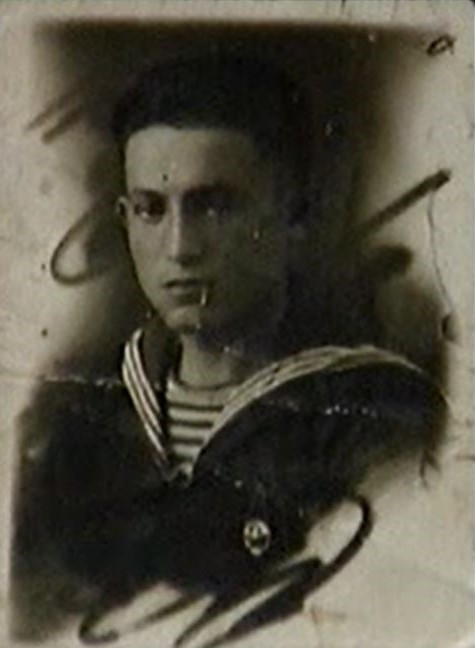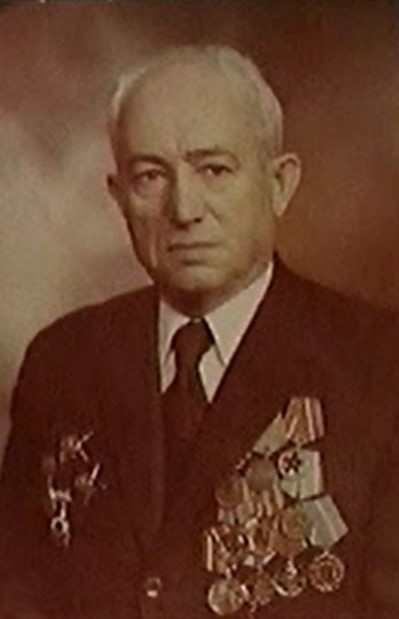Efim Smolyanskii was born in 1916 in the town of Illintsi, some fifty kilometers east of Vinnytsia. His father Boris was a wheelwright, and he observed the Sabbath, while his mother was a homemaker. Efim had an older brother and three sisters. His mother and brother Yisrael died in the Ukrainian famine (Holodomor) of 1932-33. Efim finished a Yiddish school. In 1933, fleeing the famine, he moved first to the Crimea, and then to Kiev. In the Ukrainian capital, he worked as a typesetter. Following a prevalent fashion, he attended a flying club. In 1936, he was drafted into the Red Army, and served with the Black Sea Fleet as a sailor. Upon learning that Efim was an aviation fan and had some experience as a member of a flying club, his commanders transferred him to an air base near Sevastopol, in the Hollandia Bay. From there, he volunteered to enlist in the School of Aircraft Technicians in Yeisk, on the Russian side of the Azov Sea coast. In 1940, after 1.5 years of study, Lieutenant Smolyanskii began his service with the newly formed 93rd Air Squadron. It was based in Kerch, eastern Crimea, and consisted of fighter aircraft and MBR-2 "flying boats" (sea reconnaissance aircraft).
On June 22, 1941, the Soviet-German War broke out. The commanders of the air base allowed the officers to evacuate their families into the North Caucasus. In early July 1941, the air squadron was transferred to Kherson, southern Ukraine, which the Germans were trying to occupy. Smolyanskii saw that the Soviet aircraft were inferior to the German "Messerschmitts"; many fliers were downed during first days of fighting.1 The air squadron retreated, first to Kerch, and then to the Caucasus. On December 30-31, 1941, the Soviets retook Kerch from the Germans. The technicians, including Smolyanskii, were sent to the town to put the airfield in order and prepare it for receiving the 93rd Air Squadron. After arriving in Kerch, Lieutenant Smolyanskii learned that, several days before retreating from the town, the Germans had shot at least 2,500 local Jews in the so called "Bagerovo Trench" – a long anti-tank trench near the Baherove railway station. Smolyanskii reported this discovery to the political commissar of the 21st air base, and asked several sailors to go to Baherove and examine the site. Many sailors volunteered to go, but the commissar gave Efim only one truck. The trench was 200 meters long and full of dead bodies; the Nazis had not even covered them with earth. According to Smolyanskii, the young sailors burst into tears at this horrific sight; one sailor was hysterical.2 Everyone realized that the victims were Jewish. Over the following days, many officers asked for permission to go to the Bagerovo Trench. There was widespread anger at the Germans.
In May 1942, the Germans recaptured Kerch, and the 93rd squadron once more retreated to the Caucasus. In 1942, Smolyanskii fought in the North Caucasus. In January-February 1943, he participated in the liberation of Yeisk – the very town in which he had been trained as an airman. He went on to spend the rest of 1943 at the Yeisk air base. In early 1944, he took part in the liberation of Odessa. Smolyanskii met V-E Day in Odessa, where he was serving as a quartermaster at an air base.
In the course of the war, Smolyanskii was awarded two Orders of the Red Star and a number of medals. His highest rank was that of senior lieutenant.
After the end of the war, Smolyanskii served in airfield construction battalions in the Crimea, later moving on to military administrative positions. In 1959, he was discharged from the army in the rank of major, and moved to Kiev. In 1992, Efim Smolyanskii immigrated to Israel.








